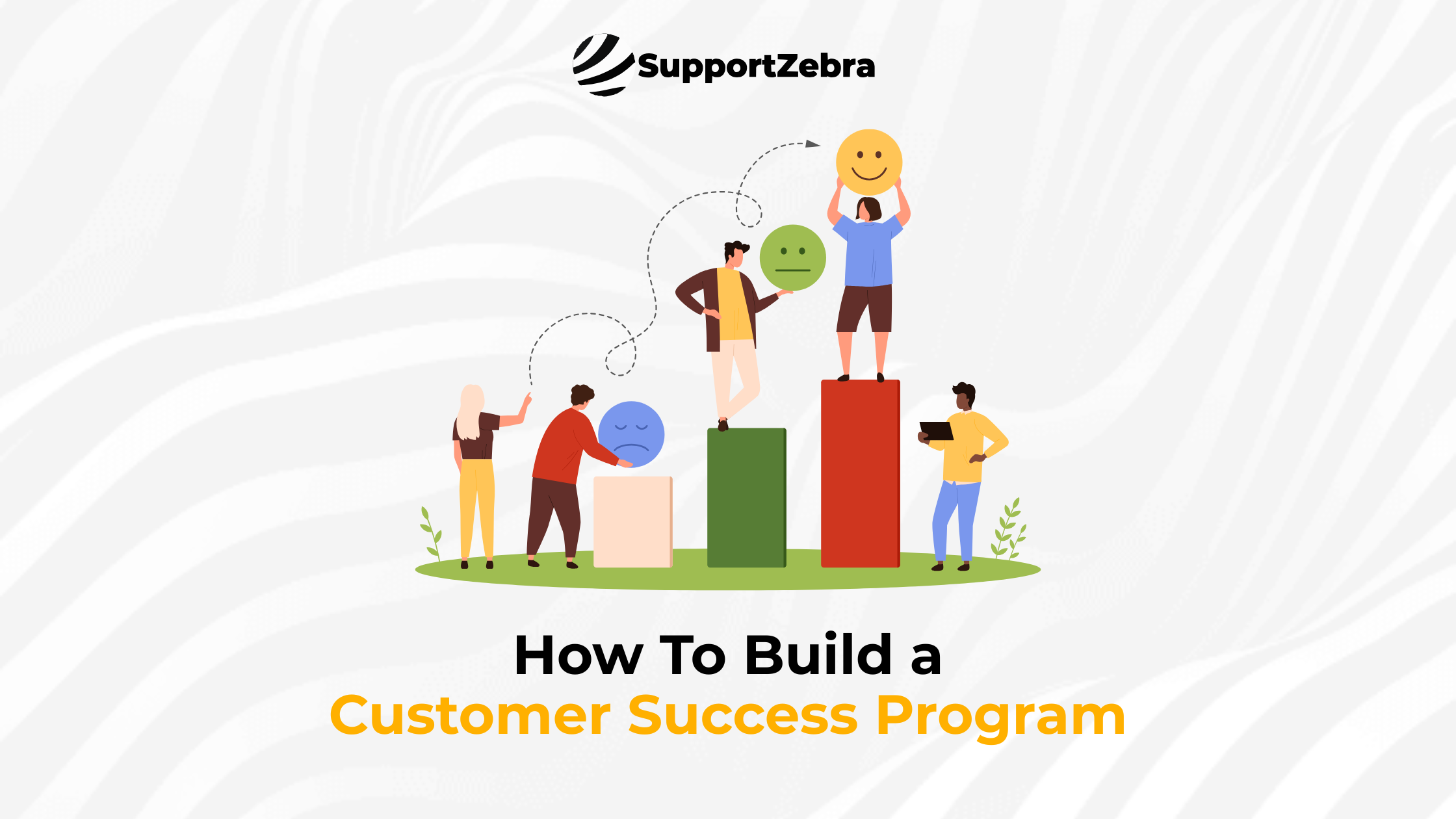Is Your Business Missing This? Build a Customer Success Program That Wins!
Key Takeaways:
- A successful customer success program begins with clear objectives and effective customer segmentation, enabling it to meet individual needs.
- Building a skilled, cross-functional customer success team ensures consistent support, proactive engagement, and stronger customer relationships.
- Streamlined onboarding, ongoing education, and open communication channels enable customers to achieve their goals and remain engaged.
- Utilize data and feedback to continually enhance your program, reassess strategies, and foster long-term growth and customer satisfaction.
Have you ever wondered how some businesses keep their customers returning for more? It’s not magic but a well-crafted customer success program. But what exactly is customer success, and why is it so important?
Customer success programs are designed to proactively assist customers in achieving their desired outcomes while using your product or service. By prioritizing your customers’ success, you enhance their overall experience and reap significant benefits for your business. These advantages include improved customer retention, higher satisfaction rates, and increased revenue.
This blog will discuss the critical components of establishing a successful customer success program and how it can benefit your customers and your company.
Step 1: Setting Clear Goals and Objectives
Establish a customer success program with clear goals and metrics, such as customer satisfaction scores, to track effectiveness and identify risks. A robust program can enhance customer loyalty, reduce turnover, and drive repeat business, providing insights for product, marketing, and sales improvements. Aligning success metrics with business objectives will ensure the program’s success.
Step 2: Identifying and Understanding Your Customer Base
To create an effective customer success program, categorize your customers and develop detailed personas for each group. This enables you to tailor strategies to their unique needs.
By understanding demographics, job roles, goals, and challenges, you can create targeted solutions and support that address their issues and help them achieve their objectives, resulting in a successful program.
Step 3: Building a Dedicated Customer Success Team
A successful customer success program requires a dedicated team with defined roles, including Customer Success Managers (CSMs), support staff, and cross-departmental members. CSMs focus on customer relationships, while support staff handle inquiries and collaborate with sales, product development, and marketing.
Hiring individuals with strong communication, interpersonal skills, and technical expertise is essential. Ongoing training and mentorship foster a team-oriented environment, making this structure vital for effectiveness.
Step 4: Implementing Customer Onboarding Processes
A successful customer success program hinges on effective onboarding. Simplify this process by providing a welcome packet, scheduling a kickoff meeting, and creating a clear onboarding plan.
Customize the experience, assign a dedicated Customer Success Manager (CSM), and set clear goals. Offer resources such as user guides, video tutorials, and FAQs, and ensure that customers can easily access support. By implementing these strategies, businesses can help customers achieve their desired outcomes with products or services.
Step 5: Establishing Regular Communication Channels
Regular communication is crucial for fostering strong customer relationships and achieving success. Enhance it with frequent updates, diverse methods, personalized messages, and proactive engagement. Use tools like Salesforce, HubSpot, and Zoho CRM to manage interactions, while Gainsight and Totango focus on customer success.
Automated emails and chatbots can keep customers informed and engaged. Ultimately, fostering relationships and providing timely support are crucial for customer satisfaction. Leveraging technology and maintaining open communication can significantly improve these efforts.
Step 6: Proactive Engagement and Support
To help customers succeed, businesses should engage with them by analyzing usage data, tracking customer health, scheduling check-ins, and providing ongoing education. Analyzing data reveals trends and issues, while health tracking identifies risks early.
Regular check-ins are necessary to gather feedback and provide targeted outreach support to individuals who require additional assistance. Ongoing education through webinars and resources ensures customers maximize product use. This proactive approach enhances satisfaction, builds loyalty, and fosters future success.
Step 7: Measuring and Analyzing Success
To ensure your customer success program is practical, regularly analyze customer satisfaction, loyalty, churn rate, and retention metrics. Gather feedback through surveys to identify issues and areas for improvement.
Monitor product usage to identify popular features and those that require upgrades. Use this data to enhance onboarding and support, and continuously adjust strategies based on feedback to meet evolving customer needs for long-term success.
Step 8: Iterating and Scaling Your Program
A successful customer success program requires continuous improvement and adaptability. Companies should analyze successes and failures, make data-driven decisions, and adopt an iterative approach. Key strategies include team development, resource management, re-evaluating customer segments, and creating scalable processes.
Learning from insights and mistakes helps address challenges, while an iterative method allows for testing and adjustments. Implementing these strategies can boost customer satisfaction, foster loyalty, and drive sustainable growth.
Get Ahead: Build a Customer Success Program That Works

SupportZebra offers comprehensive customer success solutions that drive substantial business growth by prioritizing customer satisfaction and loyalty. When companies entrust their customer support to SupportZebra, they can minimize customer turnover, amplify profits, and streamline operations.
SupportZebra’s forward-thinking strategy encompasses individualized customer interactions, continuous training for agents, and ongoing assessments of service quality. This ensures customers receive customized assistance that aligns with their specific needs and expectations, ultimately leading to increased satisfaction and loyalty.
By harnessing SupportZebra’s expertise, enterprises can reallocate internal resources towards growth initiatives, resulting in increased revenue and a competitive edge in the industry. Contact SupportZebra today and discover the advantages of our customer success strategies for your company.

